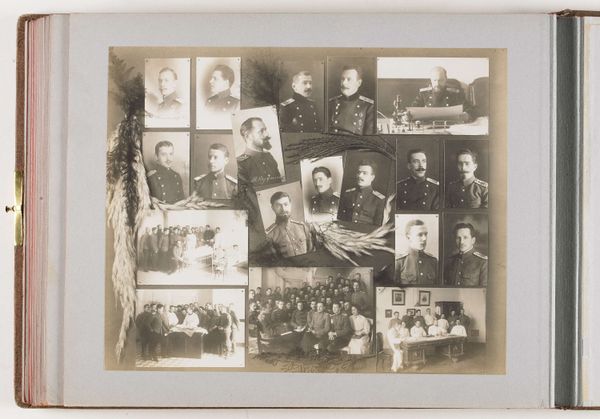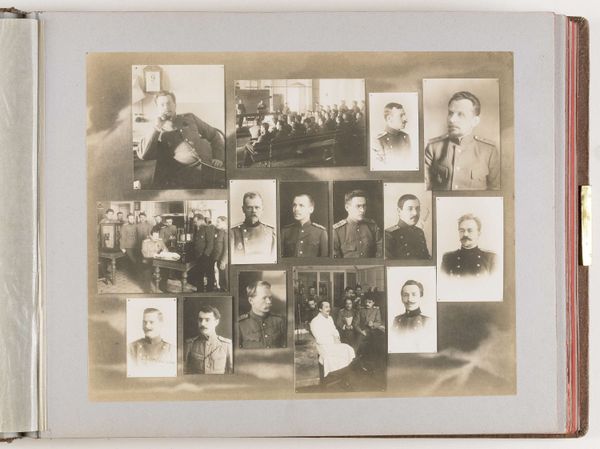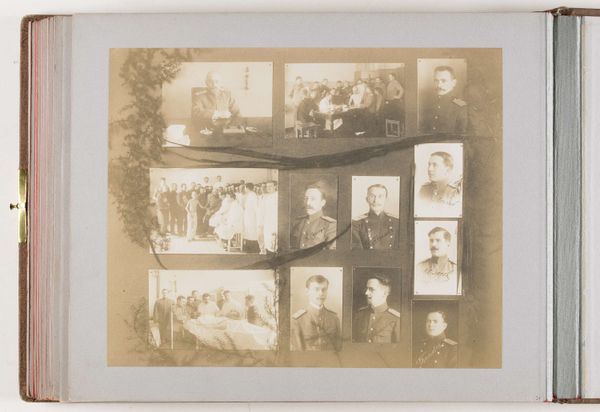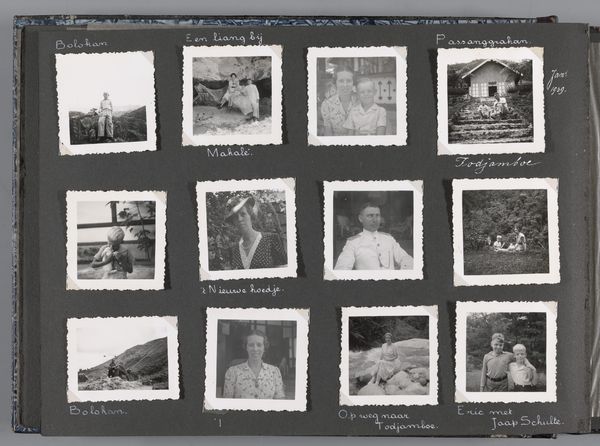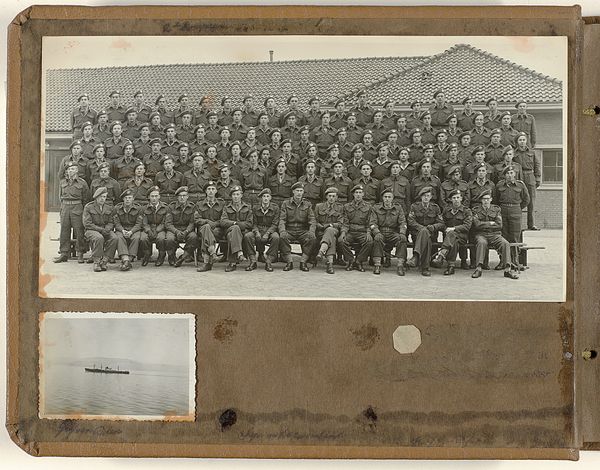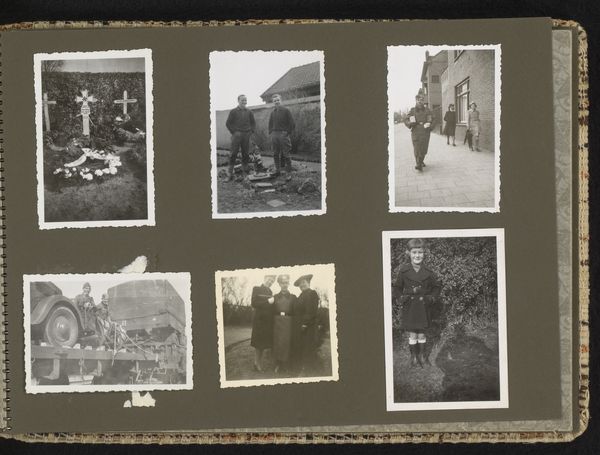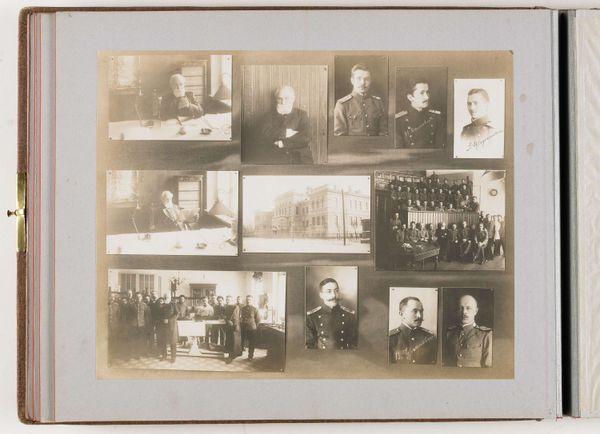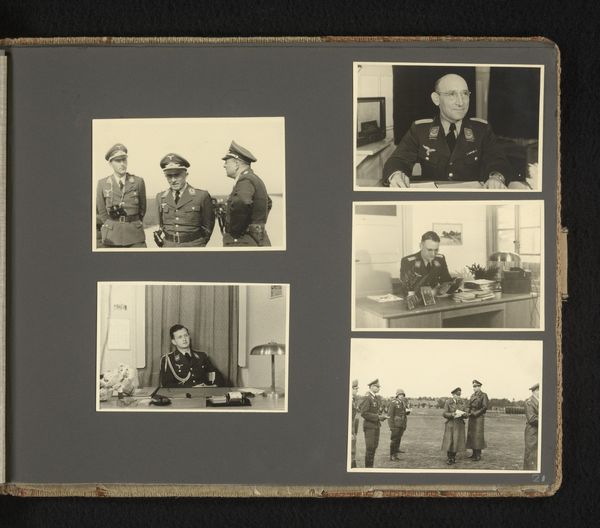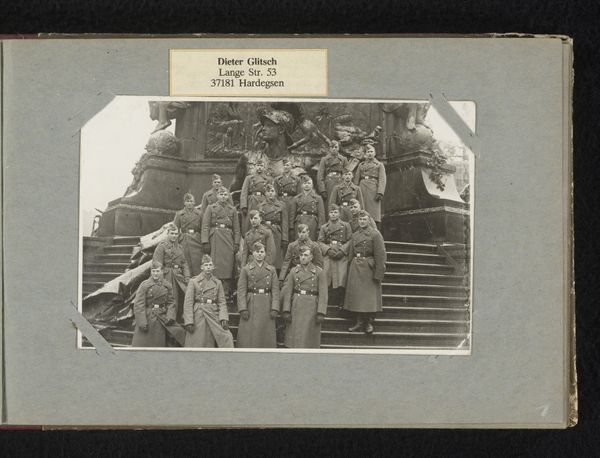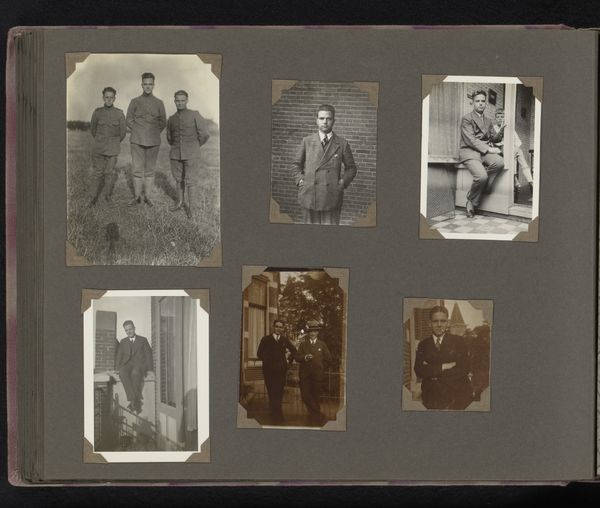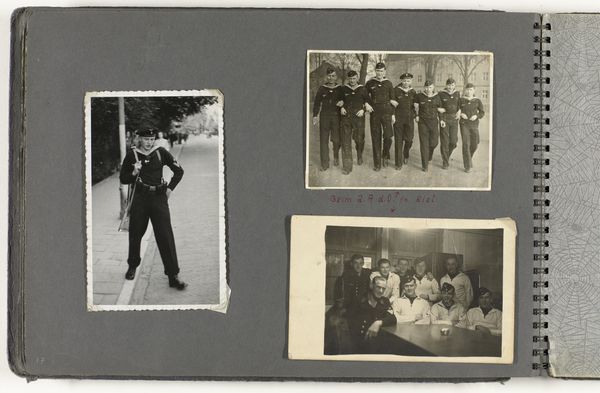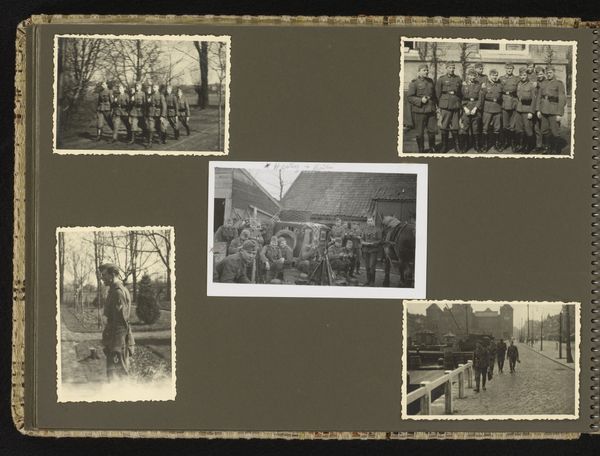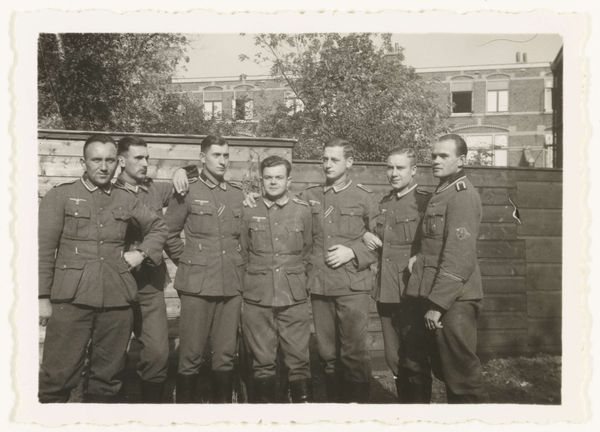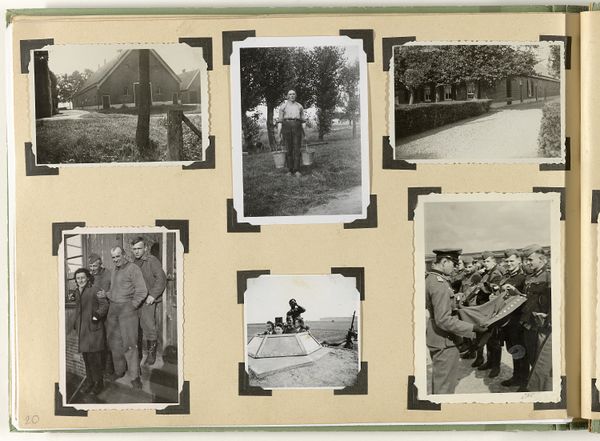
photography, albumen-print
portrait
photography
group-portraits
albumen-print
Dimensions: height 215 mm, width 280 mm
Copyright: Rijks Museum: Open Domain
Curator: Here we have “Elf portretten van Theunissen,” a series of albumen prints assembled by Theunissen, a sergeant-major, created between 1933 and 1953. Editor: There’s a certain stoicism conveyed by these images. Each man is so still, contained, as though holding something back from the camera. Curator: Albumen prints, such as these, were prevalent in the mid-19th to early 20th centuries. They involve coating paper with egg white—albumen—before adding a silver nitrate solution, creating a light-sensitive surface. It’s a meticulous process, far removed from our instant digital images. I'm curious about Theunissen's role in production. Editor: Note the range of compositions. Mostly austere headshots dominate, all framed uniformly. The sepia tones unify the diverse sitters visually. One might also find intriguing the textural range achieved in these modest photos—smooth faces, crisply defined uniforms, grainy backgrounds. Curator: Considering the context, these portraits likely served a function beyond mere aesthetics, potentially documenting military personnel, and constructing institutional memory. I wonder what kind of exchange this photographer-soldier figure cultivated within this regiment by depicting them this way? The album itself suggests collection and record-keeping – each man frozen as a sign of imperial service in the colonial theatre. Editor: I would add, in contrast to your points of context, the framing within their small confines further heightens that sense of emotional reserve. It gives them almost a spiritual air. Curator: It’s interesting how a simple process like albumen printing elevates a project like this into the art world from mere amateur snapshots; the specific context elevates the photographs. It is both a means of expression and a commentary on military personnel within their context. Editor: It seems to echo through time with unexpected power. I will be contemplating the gazes from that bygone era.
Comments
No comments
Be the first to comment and join the conversation on the ultimate creative platform.
